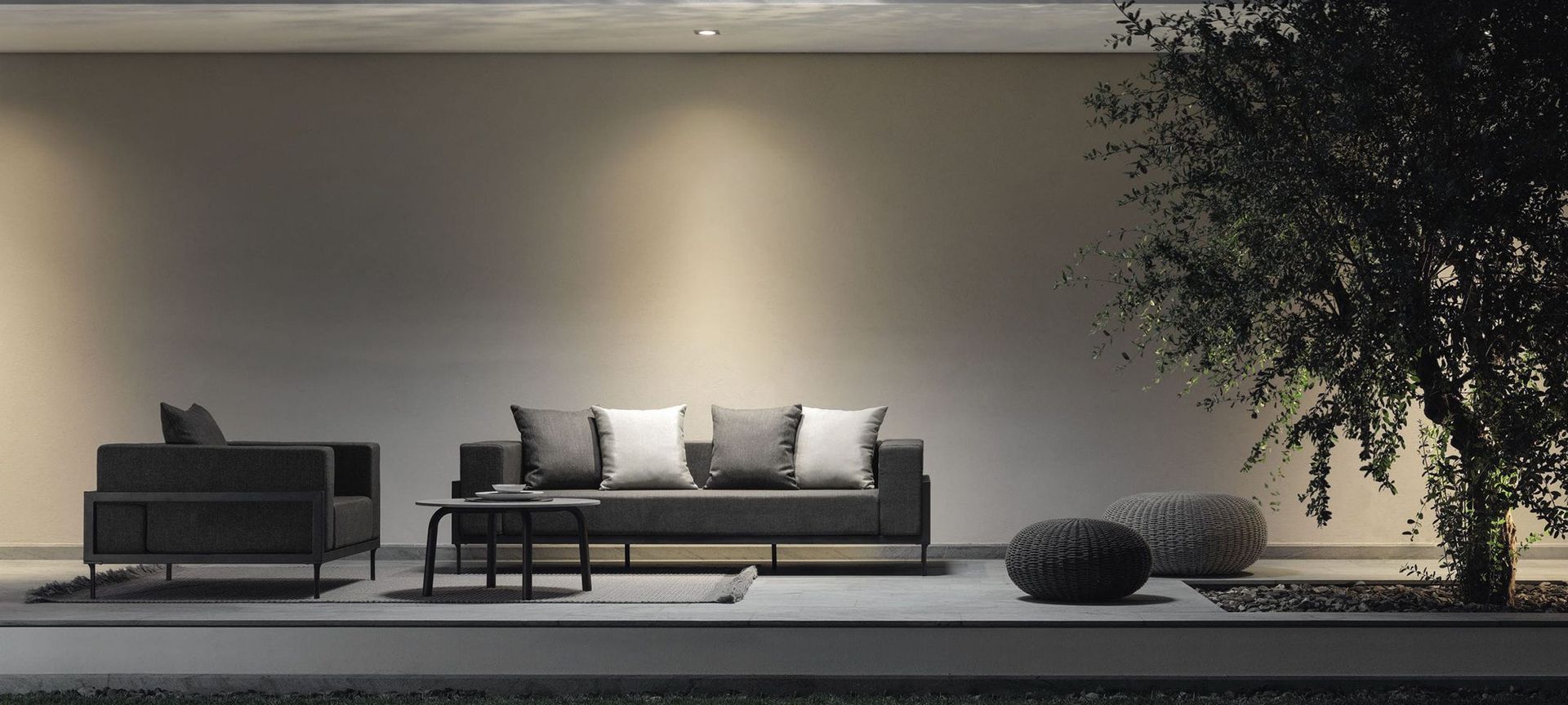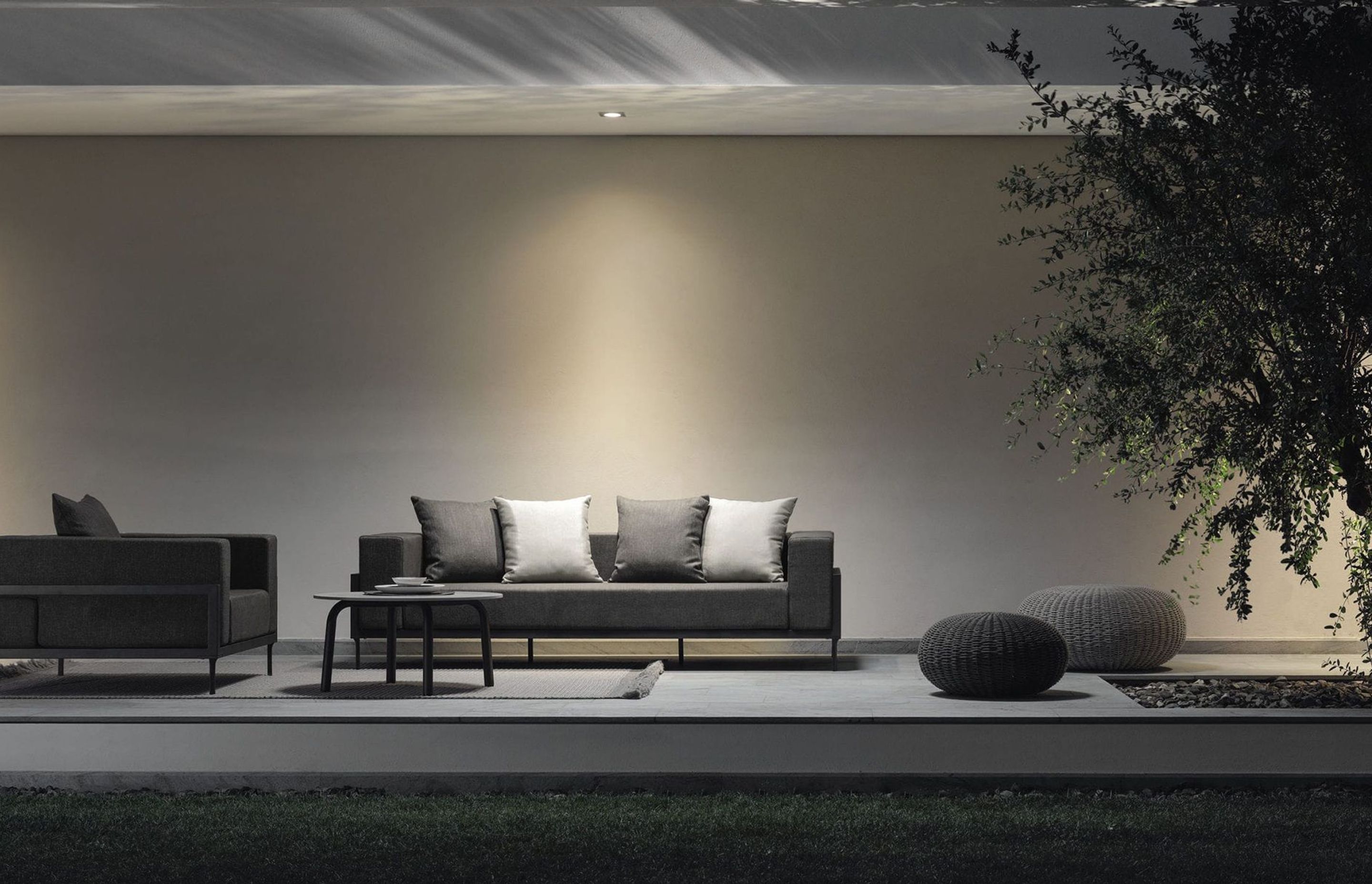Not all outdoor furniture is created equal, so we’ve compiled the top five things you need to know before you buy.
Much like an interior, the exterior spaces of your home are made up of zones; there are spots for eating, cooking, resting, socialising and playing and to furnish each of these spaces you’ll want to invest in well-designed furniture that’s equally as comfortable and stylish as your indoor furniture.
But there’s one key difference between furnishing indoors and out and that’s the exposure to the elements outside, which can be particularly harsh in some parts of coastal New Zealand.
Therefore, the first thing you need to know about picking outdoor furniture is how to pick quality, whether you’re going for wicker, aluminium, timber or another material.
1. Is it truly outdoor durable?
Just because a piece of furniture might be labelled as “for outdoor use”, it doesn’t mean it won’t degrade out in the weather. That’s because “outdoors” can also mean it needs to stay undercover in order for the fabric not to rot, for the metal not to rust, for the wicker not to perish or for the cushions not to fade.
Poynters’ Anthony Chan recommends asking the furniture supplier whether their furniture is properly certified for outdoor use, in all weather.
Inferior grade outdoor furniture is not truly “outdoor furniture” in the sense that one might expect. Polyester fabric fades very fast in our sunlight; standard foam will soak up water like a sponge, and steel frames are likely to rust.
2. Know what it’s made of
Whether you’re going for metal, timber, rattan or rope products it’s essential you invest in the best quality furniture frames.
Powder-coated aluminium furniture is the most popular Poynters sells, says Anthony, because of its resistance to corrosion and resistance to showing age over time. But you need to be confident that the powder-coating is high quality as cheaper quality powder-coating can flake and go powdery.
Also ask your supplier about the thickness of the aluminium, as this is directly related to strength.
Equally, when you invest in timber you want to know it will last, so hardwoods, in particular Teak are another popular furniture material. Teak quality can vary a lot, says Anthony.
“Cheaper teak furniture typically uses wood from the outer part of the tree trunk. It is not as dimensionally stable and not as durable. Tell-tale signs are knots and more waviness to the wood grain.”
Teak quality improves when the wood used is milled from the heart of the log, closer to the centre of the trunk.
Reclaimed teak is another fashion trend in outdoor furniture. It is teak that has been reclaimed from old houses and re-purposed for use in outdoor furniture. This style of furniture is designed to look rustic and not perfect.
Synthetic rattan is an evergreen outdoor material. While it has recently lost ground to newer materials, it is an ideal material for outdoor furniture. Quality synthetic rattan has been proven to stand the test of time. It’s durable, colour-fast, slightly compliant, and resilient.
“Look for outdoor furniture woven from a proven wicker brand for confidence. Inferior wicker will crack after a short while when exposed to our UV,” says Anthony.
Rope or cord furniture is the latest trend to hit backyards, but check if the product is synthetic and rot resistant – some products are far more resistant to UV than others. Synthetic cord is a variant of synthetic rattan. Quality cord will last in our high UV conditions. Check that the cord is either sufficiently strong, or sufficiently supported by the frame to give overall strength. Cord products do not have the interlocking woven strength that rattan possesses, so good design is more crucial. Rope products are a more recent material.
3. Fabric and foam matters
While there’s been a focus on improving the longevity of outdoor fabric in recent years so that it’s UV resistant, anti-fading and moisture resistant, the technology of the foam inside those cushions has equally improved.
Specialised outdoor foam is designed to drain the water through if it does get wet and it allows the foam to dry quickly, however inferior outdoor furniture may use standard foam which absorbs moisture and takes a long time to dry. This can mean fabric and foam turns mouldy and degrades quickly.
Newer technology foams may now include variable foam densities, multiple foam cuts, and improved water resistance – all with the goal of improving softness, and getting closer to the feel of indoor foam for improved comfort.
Anthony says that inferior foam in substandard furniture is so common, “every week I have someone coming in who wants to replace just their cushions from a cheap outdoor set”.
The best outdoor fabrics are designed to be colour-fast and feel and look like indoor fabrics. As quality gets higher, these attributes come to the fore.
So, make sure you ask your supplier what kind of protection your fabric and foam have against the elements.
And don’t be fooled by furniture that looks like it is for indoors at first glance – on the contrary “Some outdoor fabrics available now are quite amazing, they look like interior fabric but people don’t realise they can be used outdoors in all weather.”
4. Maintenance
Outdoor sets are for relaxing and enjoying the summer months. But when you choose your outdoor furniture, you need to know what sort of maintenance is expected to keep it looking sharp. The choice of material may, therefore, play a key role in your decision-making process. Man-made materials may need the least maintenance – aluminium and synthetic rattan may need very little maintenance beyond a periodic wash down with soapy water.
On the other hand, wood will need more maintenance. If you want to keep that showroom look of golden teak, your furniture will need to be regularly oiled to avoid the inevitable greying off when exposed to the elements. And even if you let timber grey off, it will still need a periodic clean to remove the build-up of grime, dirt, mould or lichen that natural materials usually attract.
Check maintenance requirements with your supplier before you buy, because if you’re not willing to maintain your set each year, you’re better off choosing another option.
5. How do you plan to use your furniture?
It’s something that you may not immediately consider when choosing your outdoor sofas or dining set – but consider whether you will leave it in-situ all year round, or if you’ll need to move it?
If you own a bach or are frequently away, or need to store and secure it when not in use, then it may need to be light and/or stackable. “For example, in a bach situation, one person might need to be able to move it in on their own,” says Anthony.
Regardless of quality, the longevity of your outdoor set will always increase if you move it out of the UV rays as much as possible, that’s why some people store cushions away in winter when not in regular use.
Powder-coated aluminium furniture is usually light-weight so it is a good first choice for portability.
Conversely, furniture that will remain in-situ all year round in high wind areas will benefit from heavier furniture like teak.
So give consideration to how you intend to use your outdoor furniture and the environment it will be used in.
Want to know more about how to pick quality outdoor furniture? Be sure to visit Poynters on ArchiPro today or call into their Auckland showroom to learn more.



